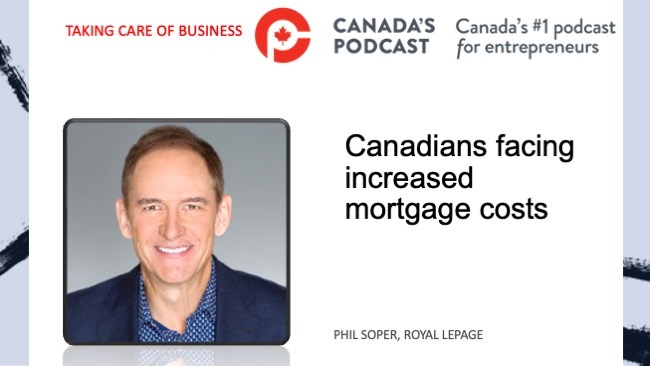

Romana King
Romana King, Senior Finance Editor, Finder, discusses the latest New Year’s Financial Resolutions report.
King talks about the top resolutions by Canadians, saving money, paying off debt, sticking to a budget and the impact of inflation and the rising cost of living on consumer spending.
The video interview can be seen here.
PRESS RELEASE
January 11, 2023, Toronto – To understand the top goals heading into 2023, Finder asked 1,000 Canadians about their New Year’s resolutions — along with their level of confidence in achieving these goals.
The results of the Finder: New Years Financial Resolutions report shows that most Canadians (55%) resolve to save more this year — the most popular financial goal for 2023 — followed closely with paying off debt (42%) and sticking to a budget (34%).
“Many Canadians take stock at the start of a new year, and after hefty price increases and so much economic uncertainty, it’s not surprising that a large portion of holiday spenders are carrying debt into 2023,” explains Romana King, senior finance editor at Finder, a personal finance comparison site with a mission to help Canadians save, invest, spend wisely and grow their wealth.
One impact of added debt is a reluctance to spend on discretionary or non-essential items, such as vacations or household goods (13%) or through increased donations to charitable organizations (6%).
Canadians optimistic they can meet their financial goals in 2023
Canadians are determined to meet their financial goals in 2023. According to respondents, 64% are either somewhat or very optimistic they will achieve their goals in 2023.
“There are lots of reasons why resolutions get derailed, but that doesn’t mean you shouldn’t make them,” explains King. “It’s the process of setting an intention, not the outcome of the goal, that matters. To make a resolution, you need to reflect, take stock, evaluate goals, assign responsibility and find inspiration — all of which are critical to developing a plan and adopting new habits.”
Cutting down to save up
Responses in Finder: New Years Financial Resolutions report confirm that most Canadians plan to cut down on discretionary expenses in the new year.
Most Canadians will scale back on daily indulgences and conveniences with 51% cutting down on take-out food, 43% trimming their restaurant expenses and 29% reducing their alcohol and tobacco purchases. Only 19% (or about 1 in 5) were willing to cut back on streaming subscription costs and 24% (about 1 in 4) would cut costs by eliminating vacations or travel.
Where will Canadians stash their savings?
The recent Finder: New Years Financial Resolutions survey asked Canadians where they planned to stash their savings in 2023. According to survey results, the most popular was a high-interest savings account (37%), with a TFSA a close second (36%) followed by a no or low-fee savings account (27%). Only 21% planned to use their savings to invest in 2023.
Top 10 tips to achieve your financial goals in 2023:
| Resolution #1: Save More Money (1) Use the 24-Hour Rule Did you find something you really want or like? Don’t buy it! Instead, practice the 24-Hour Rule (or the more extreme version, the 30-Day Rule). This rule requires you to wait 24 hours (or 30 days) before spending your hard-earned money on that must-have item. What does this do? First, it eliminates impulse shopping — a knee-jerk reaction that can really eat into your savings. Next, it forces you to examine whether that new, ‘must-have’ item will bring you more joy than achieving your bigger, more long-term goals, such as saving up for an education, a car, buying a home or retiring comfortably. (2) Go on a diet The quest to get healthier in the New Year can seriously squeeze your budget and hamper efforts to save money. But getting healthier doesn’t have to be costly. Another way to save money, while sticking to a healthier diet, is to cut down on your meat and animal product intake. Meat and dairy products are some of the most expensive items in grocery stores. On average, Canadians spend almost $1,500 each year on meat. Skip the meat aisle and save more than $120 per month. (3) Borrow more How many of us have bought a tool, a book or an item that gets used maybe once or twice each year? This lack of use is a signal that we may not need everything we buy. This excess leads to clutter and higher expenses. To reduce costs and save space and money, consider where and when you can borrow. Check out tool rentals; make a point of going to the library; join share and swap trade groups and ask friends if they’re open to sharing and swapping. The best part is that borrowing not only saves you money but opens opportunities for community involvement. (4) Sleep better by lowering your thermostat Want to sleep better and save money? Turn down your thermostat. According to the Sleep Foundation, turning your thermostat down to 18.3ºC not only gives you a better night’s sleep but you could save between $60 and $220 off your heating costs, each year. Resolution #2: Pay off debt (1) Make a plan to pay down debt Since debt can be expensive (and can hinder almost every other goal or New Year resolution), it’s critical to assess your debt and make a plan for how you will pay it down. Start by listing all debts you owe and the interest rate charged on each loan. Then make a plan on how to pay these debts back. One popular method is the Debt Snowball, where you make only minimum payments to all your debts, but pay as much as you can on the debt with the lowest balance. Once that debt is paid off, you tackle the next debt with the lowest balance, and so on. Another tactic is the Debt Avalanche, where you maximize the payments on the debt with the highest interest and once that is paid off start paying off the next high-interest loan. The good news is there is no right or wrong way to pay down debt, so pick a plan that works for you and stick to it. (2) Consolidate to lower costs and get debt-free sooner For Canadians struggling to make payments on multiple loans or for anyone with high-interest debt, consider getting a consolidation loan. The loan amount will equal the total amount you owe, but the interest rate charged is lower, so more of your payment goes towards paying down the debt. For example, if you owed $1,500 on a credit card that charged 21% (with a monthly payment of $140), plus $6,000 on a credit card that charged 22% (with a monthly payment of $560), you should look for a debt consolidation loan of $7,500. Get the loan with an interest rate of 8%, but keep your monthly payments the same at $700, and you could pay off your entire debt in less than a year, and save almost $600 in interest payments. To use the Finder comparison to find the best debt consolidation loan for your needs. Another option is to consider transferring your credit card balance to a new card with a lower interest rate or even a 0% promotional rate. Just be careful, as the key to this strategy is to use the savings from consolidating debt to repay the loan, not take on more debt. (3) Review your credit report When tackling debt, be sure your hard work is rewarded with an increase in your credit score. While many factors go into calculating your credit score, how much debt you carry and how responsible you are at paying it off are two critical components. To motivate yourself — and confirm your hard work is being recorded — be sure to check your credit report. Confirm that paid-off loans are no longer on your record and that regular, on-time payments are accurately reported. Resolution #3: Stick to a budget (1) Track your finances + create a budget The easiest way to develop a plan for making a big purchase is to track your finances and create a budget. It sounds boring, but by taking these steps you get a clear picture of what you earn and how you spend your money. It also helps you identify areas where you can save — putting those savings towards that big purchase. (2) Set up a dedicated savings account Separating your savings into a different account accomplishes three goals. First, it makes it harder for you to spend that money (most dedicated savings accounts charge a fee for withdrawals or don’t come with debit cards). Second, it clearly shows how much money you’ve set aside towards your goal — and this helps motivate you towards completing the goal. Finally, it allows you to earn more on these savings. By choosing a high-interest savings account, you can earn two or three times more than money saved in a regular day-to-day account. (3) Pay yourself, first Want to make saving a habit? Set up automatic deposits into your dedicated savings account. By making your savings deposits automatic, you remove the temptation to spend this money and solidify the habit of paying yourself first. This habit is critical as it’s the foundation of all savings goals, whether you’re buying a new computer, a car, a home or saving for retirement. |
Bottom Line
“We all make money mistakes,” says King. “Rather than hide our errors, use this hard-won knowledge to motivate you. Last year was tough, so use this New Year as a fresh start.”
For full report click here: https://www.finder.com/ca/new-
About Finder
Finder is a personal finance comparison site with a mission to help Canadians save, invest, spend wisely and grow their wealth. Each month Finder provides half a million Canadians — and more than 10 million globally — with independent and trustworthy financial information. Our goal is to help people make better financial decisions by providing objective, comparative insight on more than 2,000 products and services each month.
As a global fintech website and app, Finder provides consumers free access to smart money content. Whether it’s expert insight, product or service comparisons or independent reviews, Finder helps consumers stay on top of their finances, while saving time and money.
Finder is available to consumers in over 50 countries, including Canada, USA, UK, Australia, New Zealand and Singapore. Initially launched in 2006 by three Australians — Fred Schebesta, Frank Restuccia and Jeremy Cabral — Finder’s global reach now includes more than 2,000 products and services in more than 100 financial categories and provides expert content and independent reviews to more than 10 million users, each month.
 (Mario Toneguzzi is Managing Editor of Canada’s Podcast. He has more than 40 years of experience as a daily newspaper writer, columnist, and editor. He worked for 35 years at the Calgary Herald, covering sports, crime, politics, health, faith, city and breaking news, and business. He works as well as a freelance writer for several national publications and as a consultant in communications and media relations/training. Mario was named in 2021 as one of the Top 10 Business Journalists in the World by PR News – the only Canadian to make the list)
(Mario Toneguzzi is Managing Editor of Canada’s Podcast. He has more than 40 years of experience as a daily newspaper writer, columnist, and editor. He worked for 35 years at the Calgary Herald, covering sports, crime, politics, health, faith, city and breaking news, and business. He works as well as a freelance writer for several national publications and as a consultant in communications and media relations/training. Mario was named in 2021 as one of the Top 10 Business Journalists in the World by PR News – the only Canadian to make the list)
About Us
Canada’s Podcast is the number one podcast in Canada for entrepreneurs and business owners. Established in 2016, the podcast network has interviewed over 600 Canadian entrepreneurs from coast-to-coast.
With hosts in each province, entrepreneurs have a local and national format to tell their stories, talk about their journey and provide inspiration for anyone starting their entrepreneurial journey and well- established founders.
The commitment to a grass roots approach has built a loyal audience with over 120,000 downloads and thousands of subscribers on all our social channels and YouTube. Canada’s Podcast is proud to provide a local, national and international presence for Canadian entrepreneurs to build their brand and tell their story.
Advertising and Sponsorships: At Canada’s Podcast we are here to help you reach your communication objectives and get you results. If you are looking to build your brand, promote your products/services, announce an event, then you will want to reach our extensive data base of owners and entrepreneurs.
Contact sales at: robert@canadaspodcast.com and find out how we can make an impact on your bottom line with our sponsorship packages. Sponsors include: RBC Bank, The Cooperators Insurance, Silicon Valley Bank, eBay, Lethbridge Economic Development, VanHack, CBC Dragon’s Den, The Competition Bureau, The Vancouver Board of Trade and more.





